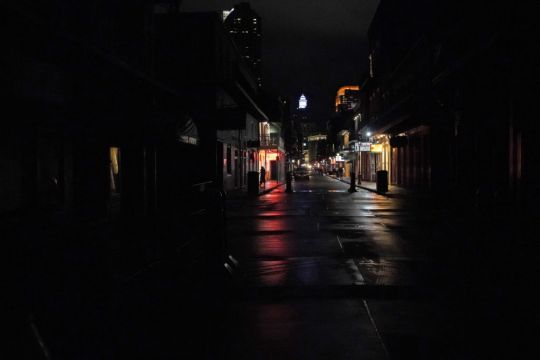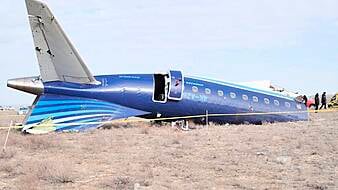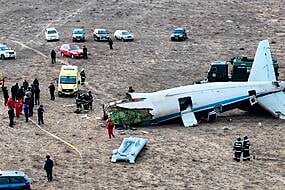At least one person has died after Hurricane Zeta struck the US Gulf Coast, with rain and winds destroying power lines and damaging buildings.
Zeta had top sustained winds of 110mph as a Category 2 hurricane at landfall and is the 27th named storm of a historically busy Atlantic hurricane season.
It set a new record as the 11th named storm to make landfall in the continental US in a single season, well beyond the nine storms that hit in 1916.
A Louisiana coroner said a 55-year-old man was electrocuted by a downed power line in New Orleans, and officials said life-threatening conditions would last into Thursday.

St Bernard Parish President Guy McInnis said emergency workers were doing their best to respond to reports of people in distress after their roofs were blown off.
“Guys, we received the brunt of Zeta, and Zeta gave us a good punch,” he told WDSU-TV.
Roads were flooded near the coast, where forecasters said Zeta made landfall around Terrebone Bay near Cocodrie, a fishing village at the end of a highway with few, if any, full-time residents and a marine laboratory where a building was inundated.
Streams of rainfall ran off roofs in New Orleans’ famed French Quarter, signs outside bars and restaurants swayed back and forth in the wind and palm trees along Canal Street whipped furiously.
STAY INSIDE: Can’t stress enough how dangerous the roads are right now in #NOLA. Widespread downed trees & power lines. Also, many traffic lights are out. If you MUST drive tonight, be extremely cautious & treat intersections with lights out as four-way stops. #Zeta pic.twitter.com/YbbPDJk3z9
— Mayor LaToya Cantrell (@mayorcantrell) October 29, 2020
With much of the city in the dark and more than 200 trees reported fallen, New Orleans mayor LaToya Cantrell implored residents to stay home and let city officials assess the damage instead of people going out and doing it themselves.
“Although we have made it through, we have been damaged, we have been hit,” she said.
More than 875,000 customers were without electricity in Louisiana, Mississippi and Alabama, including about 350,000 in metro New Orleans.
Strong, damaging wind gusts, which could cause tree damage and power outages, will spread well inland across portions of southeastern Mississippi, Alabama, northern Georgia, the Carolinas, and southeastern Virginia overnight and Thursday due to Zeta's fast forward speed. #Zeta pic.twitter.com/43lJDLXgC2 — National Hurricane Center (@NHC_Atlantic) October 29, 2020
Zeta weakened to a Category 1 hurricane with winds of 90mph as it moved into southern Mississippi few hours after landfall, but forecasters said it remained a life-threatening storm.
An average season sees six hurricanes and 12 named storms but this extraordinarily busy season has focused attention on climate change, which scientists say is causing wetter, stronger and more destructive storms.
After Hanna, Isaias, Laura, Sally and Delta, Zeta will tie a record set in 1886 and repeated in 1985 for six hurricanes striking the continental US, according to Colorado State University hurricane researcher Phil Klotzbach.







